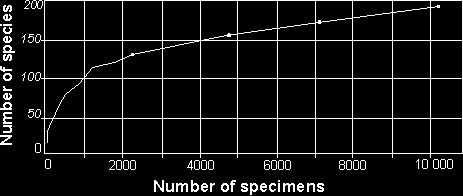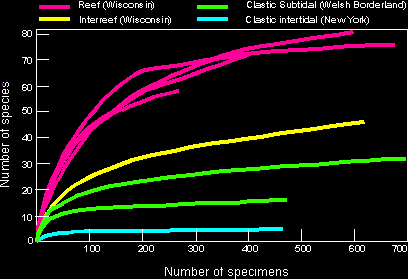|

 This graph shows the number of species recorded from Silurian reef collections in the Milwaukee Public Museum. Examination of 3000 specimens produced a record of 140 species. At 6000 specimens, 165 species were recorded. A total of 191 reef species were recorded at the final sample size of 10,201 specimens. Note that the curve does not reach a plateau. Examination of additional specimens would add to the number of recorded species. This graph shows the number of species recorded from Silurian reef collections in the Milwaukee Public Museum. Examination of 3000 specimens produced a record of 140 species. At 6000 specimens, 165 species were recorded. A total of 191 reef species were recorded at the final sample size of 10,201 specimens. Note that the curve does not reach a plateau. Examination of additional specimens would add to the number of recorded species.

 Biodiversity is commonly compared between different environments. This diagram shows that Silurian reefs contain more species than Silurian non-reef environments, something that is also seen in the modern world. Each curve represents a single sample. Biodiversity is commonly compared between different environments. This diagram shows that Silurian reefs contain more species than Silurian non-reef environments, something that is also seen in the modern world. Each curve represents a single sample.

 Biodiversity can also be compared through time. This diagram, which does not include sample size, shows a dramatic increase in species diversity of reefs from Ordovician to modern times. Note log scale on axis for number of species. Biodiversity can also be compared through time. This diagram, which does not include sample size, shows a dramatic increase in species diversity of reefs from Ordovician to modern times. Note log scale on axis for number of species.
|




